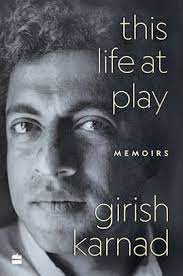
First time, I had heard about the restaurant chain Saravana Bhavan was around 2012, when my colleague took me for a lunch in the RK Salai outlet. I am not sure if at that time, I had vaguely heard or hadn’t even heard, that the founder of this chain was the prime accused in a murder case. Subsequently, a few months later I had a mini meals plate as a parcel and I don’t recall if there was any reference to the case from my other colleague. Later in 2016 my mother sampled the food from the hotel’s branch in Texas, neither she nor anyone else bothered about it. One could attribute many things to this lack of context for the regular public or patrons of the restaurant. But maybe the most important of all is the fact that the name of the founder and the brand name he owned were completely different.

Coming to the book–‘Murder on the menu’–the title evokes a certain pulp fiction kind of flavor and one could construe it as a novel and even expect a serialised narration of the rise and fall of Rajagopal, the founder of Saravana Bhavan. However, the book’s tone is a bit of everything with a back and forth narration. It is an amalgamation of an expose, an editorial and regular article, with notes from public domain documents related to courts’ hearings and judgements, peppered with snippets from the exclusive interviews the author put together. There is an attempt to strike a balance with positive interviews and some incidents from the restaurant, and let the audience decide for themselves (as if there were any grey areas or any doubt about the heinous crime) like the Netflix documentary on Osho Rajnish (Wild Wild West). The book suffers from this lack of direction, and yet if you are new to the Chennai/Tamil Naidu scene, and not very plugged into the overall case, it engages you for the most part.
The book highlights the food scene in Chennai, the genesis and growth of Saravana Bhavan, the rise of Rajagopal and his fall, a woman’s crusade and the probable mysterious support of Ms.Jayalalitha that enabled fast tracking the case (after the inordinate delay). Guess the idea of the author was to present all the various threads as a mini lunch served in one of the Saravana Bhavan restaurants. To that extent the book succeeds, giving you a taste of each. It’s a small book and a fast read, one you could complete in one go, and then decide which ones you would like to dig in more, as per your interest. Or, pick up the next book on the same topic, if it were to come out.


